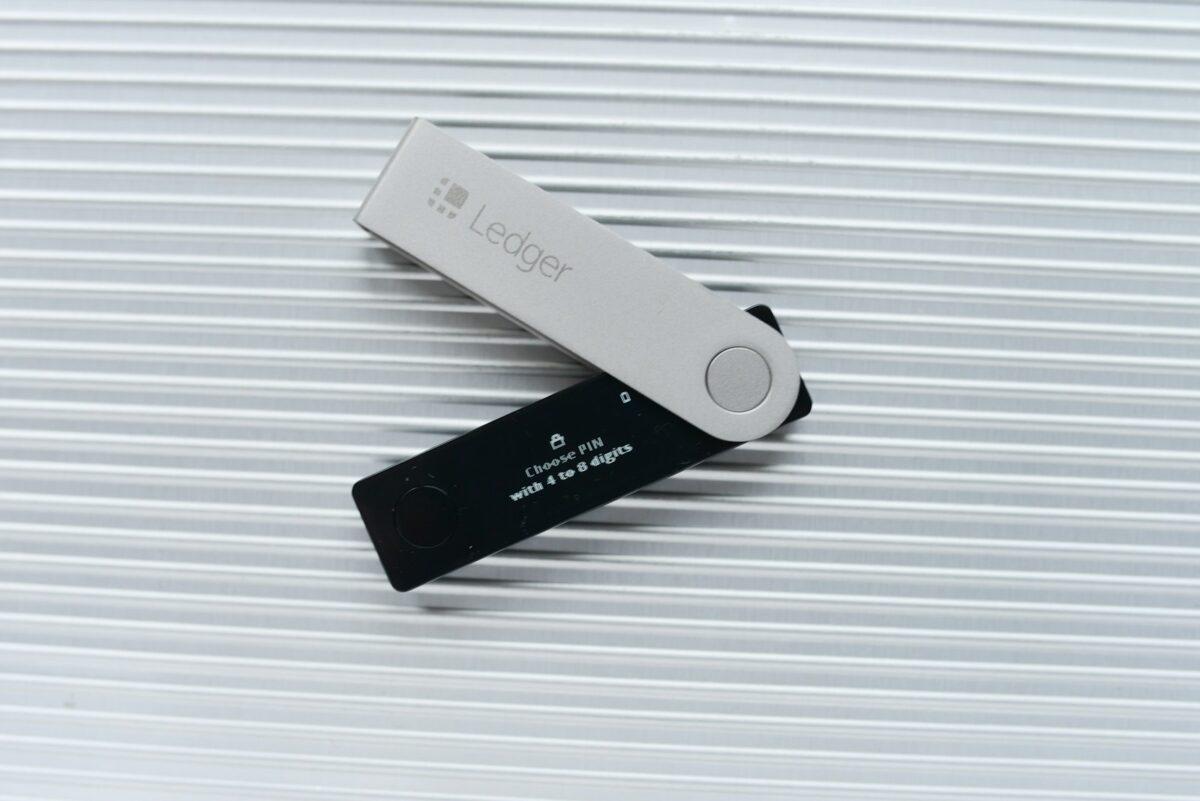
Crypto inheritance planning

Preparation for transferring decentralized assets demands precise coordination between legal frameworks and practical measures. Establishing clear instructions within estate documents ensures your family can gain authorized access without delays or disputes. Without this alignment, valuable holdings risk becoming inaccessible or lost permanently.
Integrating digital asset directives into traditional estate management offers a path to smooth succession. Explicitly outlining authentication methods, storage locations, and contingency plans mitigates the risk of locked wallets or forgotten keys. This approach safeguards both the value and continuity of wealth passed down through generations.
An effective roadmap includes appointing trusted agents with proper legal authority to act on your behalf. Combining cryptographic security with enforceable legal instruments enhances the reliability of recovery processes. Such foresight transforms intangible holdings into tangible benefits for heirs, preserving family financial stability over time.
Inheritance Planning for Digital Assets: Getting Started
Ensuring proper access to a blockchain-based estate requires meticulous preparation focused on secure key management and legal clarity. The primary challenge lies in enabling authorized family members or designated parties to recover digital holdings without compromising private keys during the owner’s lifetime. Employing multi-signature wallets, hardware security modules, or time-locked smart contracts can create controlled recovery mechanisms that balance accessibility with protection against unauthorized use.
Legal documentation should explicitly define how cryptographic credentials relate to the overall estate distribution. This involves integrating digital asset instructions into wills or trusts, specifying custodianship protocols and access conditions. Jurisdictions vary in their recognition of such arrangements, so collaboration with legal experts familiar with blockchain technology is advisable to avoid conflicts between on-chain control and off-chain inheritance laws.
Technical Strategies for Securing Access and Recovery
Segmentation of private keys through Shamir’s Secret Sharing provides a resilient method for distributing control over digital assets among trusted individuals. By splitting a key into multiple shares, only a predefined quorum can reconstruct it–thus preventing single points of failure while safeguarding against loss. Practical implementations often involve combining this approach with hardware wallets stored separately by different family members or legal representatives.
Time-delay transactions embedded in smart contracts offer programmable solutions whereby beneficiaries gain access after predetermined conditions are met, such as a date or proof of death. These mechanisms reduce dependency on centralized intermediaries and introduce automation into estate execution. However, they require precise coding audits to prevent vulnerabilities that could jeopardize asset transfer.
- Seed phrase escrow: Entrusting encrypted backups of seed phrases to third-party services under strict contractual terms.
- Multi-factor authentication: Requiring biometric or additional verification alongside key possession enhances security before granting access.
- Legal guardianship clauses: Embedding explicit instructions within estate documents ensures smooth transition during probate processes.
The immutability of blockchain records complicates alterations posthumously; therefore, proactive planning must anticipate future technological changes and potential format migrations. Regular audits and updates of access procedures mitigate risks associated with obsolescence or emerging threats. Families should receive clear guidance on handling recovery tools securely while understanding operational nuances inherent to decentralized ledgers.
An experimental approach includes simulating inheritance scenarios using test networks (testnets) where users can practice transferring assets under various contingencies without financial risk. Such exercises reveal practical challenges like timing delays, transaction fees impact, and multisig coordination complexities–offering valuable insights for refining real-world strategies before actual deployment.
Secure Wallet Access Transfer
Ensuring the seamless transfer of wallet access for digital assets requires meticulous preparation and integration with an individual’s estate management strategy. A secure method involves creating a legally recognized framework that designates trusted family members or executors to manage private keys and recovery data upon incapacity or death. This approach minimizes risks of asset loss due to inaccessible wallets, which often results from inadequate documentation or absence of clear instructions.
Technical solutions such as multi-signature wallets allow splitting control among several parties, reducing single points of failure while maintaining security. For example, a 2-of-3 multisig setup can designate two family members and one legal advisor as co-signers, requiring at least two approvals for transactions. This mechanism protects digital holdings from unilateral misuse and facilitates orderly succession through predefined protocols embedded in smart contracts.
Legal Instruments and Documentation for Asset Recovery
Incorporating wallet access details into legal documents enhances enforceability during estate settlement. Utilizing encrypted hardware wallets paired with sealed recovery phrases stored securely (e.g., safety deposit boxes) ensures confidentiality yet accessibility when required. Recent case studies demonstrate that clear disclosure within a will or trust–specifying exact locations and custodianship procedures–significantly improves successful retrieval rates of digital holdings after the owner’s passing.
An additional layer involves establishing a digital inheritance plan that includes step-by-step instructions for accessing seed phrases or private keys, coupled with contingency plans for lost credentials. Some jurisdictions recognize “digital executor” roles empowered by court orders to access encrypted assets legally, highlighting the importance of aligning technical preparations with applicable regulations.
- Use hardware wallets compatible with backup passphrases
- Store recovery information separately from primary device
- Designate multiple trusted individuals with clear authority hierarchy
- Create legal documents explicitly referencing wallet management
- Integrate multisignature schemes to distribute control
A practical methodology includes routine testing of recovery procedures with designated parties to verify their understanding and readiness. Simulated exercises reveal potential gaps in knowledge or documentation flaws before actual necessity arises. These rehearsals act as controlled experiments validating the robustness of the entire secure transfer system.
The convergence of cryptographic security measures and traditional estate administration demands innovative research into hybrid models combining blockchain technology with conventional legal frameworks. Ongoing investigations analyze how decentralized identifiers (DIDs) might facilitate dynamic permission updates over time, accommodating changes in family structure or asset composition without compromising integrity or recoverability.
Legal documentation for crypto
Establishing precise legal records is fundamental to ensuring the orderly transfer and recovery of encrypted assets within an estate. Documentation must clearly define ownership, access credentials, and authorized recipients to prevent loss or disputes among family members. Utilizing multi-signature wallets with designated signatories embedded into a legal framework can enhance security while providing clear directives for asset distribution.
Preparation requires integrating private key management with formal instruments such as wills or trusts that explicitly mention digital holdings. Including detailed instructions for accessing hardware wallets, seed phrases, and backup locations within sealed documents held by trusted legal representatives significantly reduces risks associated with irretrievable assets. This approach aligns blockchain’s immutable nature with traditional legal mechanisms, offering coherent governance over digital wealth.
Technical strategies supporting legal frameworks
Implementing layered recovery methods addresses the challenge of asset retrieval after incapacitation or death. For instance, threshold cryptography enables splitting keys into multiple shares distributed among trusted parties or custodians, activating only upon meeting predefined conditions governed by legal agreements. These protocols exemplify how cryptographic techniques can complement estate planning by safeguarding against single points of failure.
An illustrative case involved a family utilizing a time-locked smart contract alongside notarized instructions to regulate the release of tokens over several years post-owner demise. This setup provided both flexibility and control, balancing immediate family needs against long-term wealth preservation goals. Such documented arrangements underscore the necessity of combining technical solutions with jurisdictionally compliant documentation to uphold rights and responsibilities effectively.
Choosing Trusted Digital Executors
The selection of a reliable digital executor is paramount for ensuring secure access and management of blockchain-based assets within an estate. A competent executor must possess the technical expertise to handle cryptographic keys, wallets, and multi-signature mechanisms essential for the recovery process of private keys. Without this proficiency, legal transfer or retrieval of digital holdings can become inaccessible, potentially resulting in permanent loss.
Legal frameworks surrounding decentralized asset management remain complex and vary by jurisdiction; therefore, appointing a digital executor with thorough understanding of both legal obligations and technical protocols improves compliance and mitigates risks. This ensures that the estate’s digital portfolio is administered in accordance with applicable laws while preserving confidentiality and integrity during succession procedures.
Technical Competence as a Foundation
A trusted representative must be well-versed in key recovery methods such as hardware security modules (HSMs), mnemonic seed phrases, and threshold signatures. Case studies reveal instances where failure to implement multi-factor authorization or timely backup led to irreversible loss of assets worth millions. For example, in 2021, an estate lost access after the executor lacked knowledge about cold storage systems critical for safeguarding private keys offline.
An effective preparatory strategy involves documenting detailed access instructions using encrypted channels accessible only by authorized parties. This documentation should include step-by-step guidelines on interacting with smart contracts, wallet interfaces, or custodial services involved in managing the estate’s holdings. Such thorough preparation facilitates smooth execution without reliance on guesswork or external intervention.
Legal Integration and Verification Processes
The integration between traditional legal instruments and blockchain technology requires executors capable of bridging these domains. Smart contract audits and notarization mechanisms are examples where digital executors validate authenticity before initiating transfers or withdrawals. Selecting an individual familiar with these processes can prevent disputes arising from contested claims over assets embedded in immutable ledgers.
- Verification: Ensures rightful claimant identification through cryptographic proofs.
- Authorization: Executes transactions following predefined conditions encoded on-chain.
- Compliance: Adheres to jurisdictional inheritance laws affecting asset distribution.
The Role of Trust Models and Third-Party Services
Diverse trust models exist ranging from centralized fiduciaries to decentralized autonomous organizations (DAOs) functioning as executors. Employing third-party services specializing in secure key escrow combined with multisig wallets offers redundancy against single points of failure. These solutions enable collective control over estate assets requiring multiple approvals before any movement occurs, enhancing security during transitional phases.
Evolving Standards for Asset Transfer Protocols
The emergence of standards like ERC-725 (identity management) and ERC-735 (claim verification) introduces programmable features facilitating smoother handover upon triggering specific conditions such as death confirmation or incapacitation proof. Appointing executors familiar with these protocols enables automation while maintaining human oversight when necessary – a hybrid approach balancing efficiency with legal safeguards.
This progressive methodology encourages further research into integrating biometric authentication linked to blockchain wallets enhancing recovery options without compromising privacy or security parameters established during initial setup phases within estate arrangements.
Tax Implications on Inherited Digital Assets
Understanding the tax consequences related to the transfer of digital holdings after death is critical for secure recovery and legal compliance. Tax authorities typically treat these assets as part of the deceased’s estate, subjecting them to inheritance or estate taxes depending on jurisdictional regulations. The valuation of such assets at the time of ownership transfer plays a pivotal role in determining taxable amounts, requiring precise documentation to establish fair market value.
Access to private keys or recovery phrases by family members or legal heirs is essential for proper administration and eventual taxation. Without this access, digital holdings risk becoming inaccessible, complicating both asset recovery and tax reporting obligations. Establishing clear mechanisms for secure transfer while maintaining confidentiality ensures that beneficiaries can fulfill their fiscal responsibilities without unnecessary delays.
Legal Frameworks Affecting Asset Transfer and Taxation
The classification of virtual holdings within estate law varies internationally but generally aligns with property rights concepts. Some jurisdictions impose inheritance tax based on the total value of all assets transferred, including digital tokens, while others apply capital gains tax triggered by post-mortem asset disposition. For example, in certain European countries, inherited cryptocurrencies are taxed at rates differing from traditional financial instruments, necessitating specialized knowledge for accurate computation.
Effective strategies involve integrating digital wallets into estate inventories and collaborating with tax professionals skilled in blockchain technology. This approach facilitates transparent reporting and minimizes risks associated with underreporting or misclassification. Additionally, some regions allow deductions or exemptions if assets remain unliquidated for specific periods, highlighting the importance of timely yet informed action.
- Valuation Methods: Use exchange rates at date of transfer rather than acquisition cost.
- Tax Reporting: Ensure comprehensive disclosure of digital holdings in estate declarations.
- Legal Access: Secure recovery tools must be documented within legal instruments to grant access.
The family’s role extends beyond mere recipients; proactive involvement in understanding fiscal implications can prevent costly disputes or penalties. Encouraging open communication about access credentials supports smoother transitions and accurate tax submissions. Case studies demonstrate that families equipped with detailed records experience fewer complications during audits or legal reviews.
A deeper investigation into technical protocols reveals that multisignature wallets and hardware devices can add complexity but also security when transferring ownership rights legally recognized by authorities. Experimentation with test transfers under controlled conditions offers insights into potential bottlenecks during asset recovery after owner demise, enabling families to prepare contingencies minimizing fiscal exposure.
This exploration invites further questions: How might smart contracts automate conditional access aligned with tax deadlines? Can decentralized identifiers improve authentication while preserving privacy? Addressing these points through research advances not only protects valuable holdings but also fosters confidence among inheritors facing intricate regulatory environments governing digital wealth succession.
Communicating Plans with Heirs: A Technical Conclusion
Establishing clear and secure methods for transferring access to digital assets within the family is paramount to ensure seamless management of the estate. Preparation must integrate both technical safeguards–such as multi-signature wallets, hardware vaults, and encrypted key-sharing protocols–and legal frameworks that validate heirs’ rights without compromising security.
Failing to communicate detailed instructions creates significant risk of asset loss or prolonged legal disputes. Combining cryptographic solutions with formal documentation enhances transparency and reduces ambiguity, enabling heirs to execute asset transfer efficiently while maintaining privacy.
Key Considerations and Future Directions
- Multi-layered Access Control: Implementing threshold signature schemes distributes control among trusted family members, preventing single points of failure.
- Legal Integration: Smart contracts interfaced with jurisdictional estate laws can automate conditional transfers based on predefined criteria (e.g., death verification).
- Dynamic Asset Cataloguing: Maintaining an up-to-date digital ledger of all holdings–including tokens, NFTs, and DeFi positions–simplifies comprehensive estate evaluation.
- Education and Transparency: Providing heirs with technical knowledge about wallet operations and security protocols fosters confidence and reduces reliance on third parties.
The trajectory of decentralized identity solutions promises enhanced authentication methods tied directly to personal data sovereignty, potentially revolutionizing how families authenticate claims over estates without traditional intermediaries. Experimental integration between blockchain oracles and biometric verification could further refine secure access mechanisms.
The interplay between evolving cryptographic standards and emerging legal instruments demands continuous monitoring by asset holders. Encouraging iterative rehearsals of transfer procedures within families can reveal vulnerabilities early, allowing for timely adjustments in strategy.
This approach not only preserves asset integrity but also cultivates a culture of proactive stewardship across generations–a foundational step toward resilient digital wealth management in complex ecosystems.


